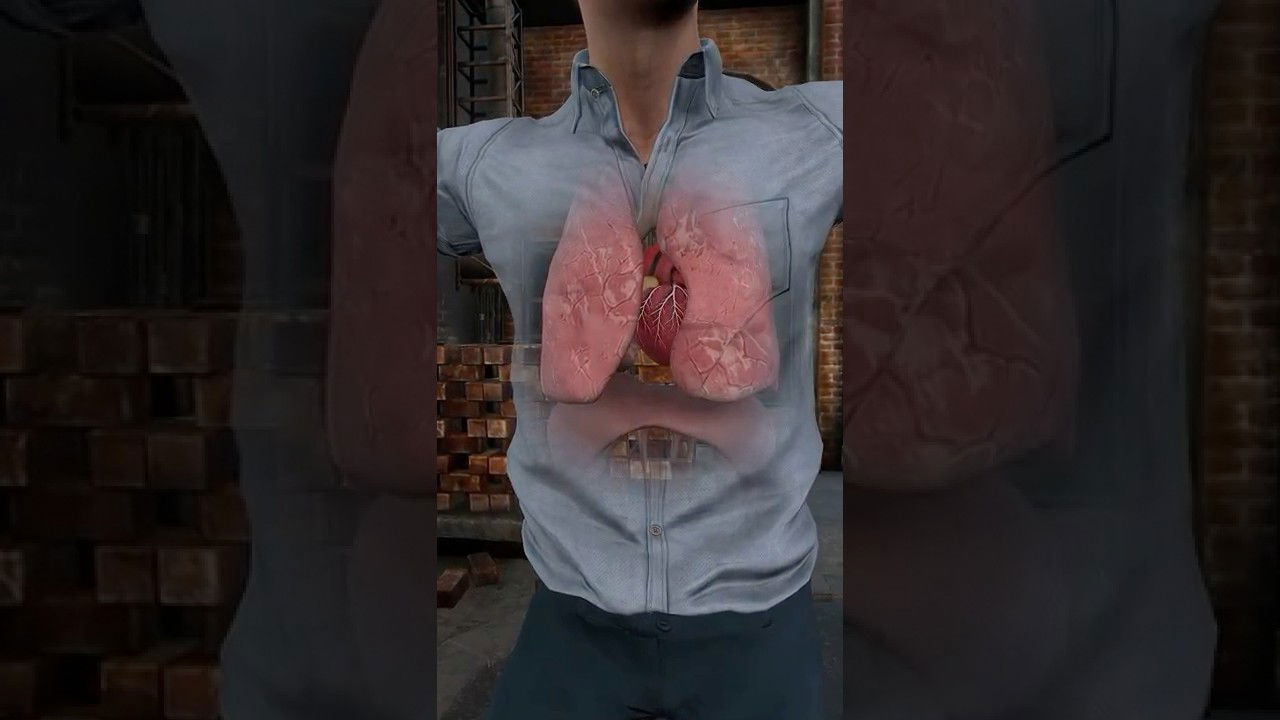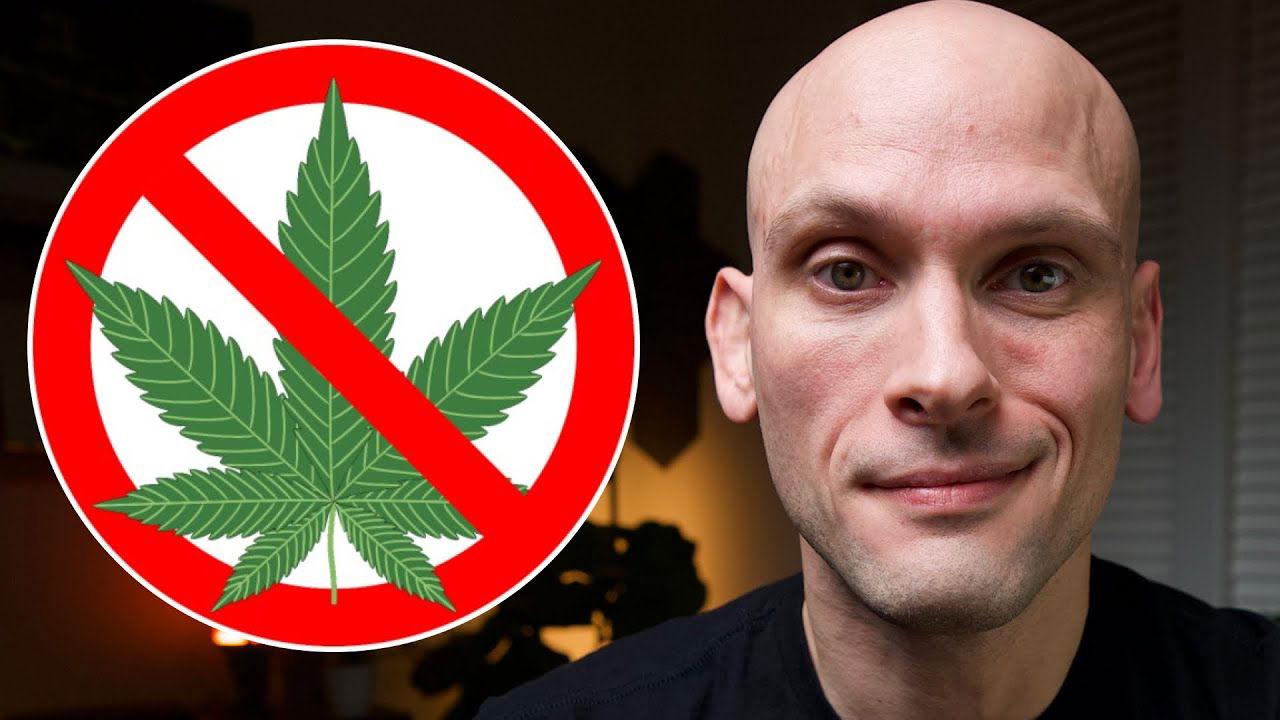Weed is one of the most commonly used substances in the world, often seen as harmless or even relaxing. Yet, a new simulation has given people an eye-opening look at what really happens inside the body when weed is consumed. Alongside this, a former user shared his honest story about quitting and how it changed his life. Together, they paint a realistic picture of both the short-term effects and long-term consequences of using weed.
According to data from the Office for National Statistics, around 2.3 million adults aged between 16 and 59 used weed in 2024. This number represents about seven percent of that age group, showing how widespread cannabis use has become. Despite its popularity, weed remains a controlled substance, and its effects on the body and mind continue to be debated.
Weed, also known as marijuana or pot, contains several active compounds.

The most well-known of these is THC, short for tetrahydrocannabinol. THC is the chemical responsible for the “high” people experience after smoking or consuming weed. It alters the brain’s normal functioning and affects areas linked to mood, perception, and coordination.
When a person smokes weed, THC travels rapidly from the lungs into the bloodstream and then to the brain. Once it reaches the brain, it binds to receptors that influence how people feel and think. This interaction can evoke feelings of euphoria, calmness, or altered sensory perception, but it can also disrupt focus and memory. Over time, regular weed use can make it harder to concentrate or retain information.
Dr. Nora Volkow, the director of the National Institute on Drug Abuse, explained that addiction is influenced by both genetics and environment. She stated that some individuals have a genetic predisposition that makes them more likely to develop addiction, even if they grow up in stable environments. On the other hand, people living in stressful or adverse conditions may also become addicted to weed, even if they do not have a genetic risk.
To illustrate the effects of weed on the human body, The Infographics Show on YouTube released a simulation video. The video visually demonstrates what happens over 30 days when someone regularly smokes weed. The simulation highlights the physical and mental changes that occur, giving viewers a clearer understanding of what happens beneath the surface.
The simulation begins with THC entering the body. Once it reaches the brain, it interacts with areas that control mood, memory, and perception. This interaction triggers the release of dopamine, a neurotransmitter often referred to as the brain’s “pleasure chemical.” Dopamine is responsible for the feeling of reward or satisfaction, which is why people often associate weed with relaxation or happiness.
However, the increase in dopamine is temporary. As the effects fade, some people may feel the need to smoke again to regain that pleasurable state. This cycle can lead to repeated use and, over time, to dependence. The video also points out several physical effects of weed, such as an increased heart rate and the dilation of blood vessels. These effects explain why many users notice their eyes turning red after smoking.
Weed also affects how the lungs function. When smoked, the inhaled particles can irritate the respiratory system. Long-term use can lead to coughing, wheezing, or shortness of breath. Although some people believe weed is less harmful than cigarettes, frequent smoking can still have negative effects on lung health.
One of the most powerful parts of the discussion around weed came from a YouTube creator named Dorian. He used to smoke weed every day throughout his teenage years and early adulthood. Eventually, he decided to quit and share his experience on his channel, Dorian Develops. His honesty attracted attention from many viewers who related to his journey.
After six months of being sober, Dorian reflected on how much his life had changed. He noticed both mental and physical improvements that he had not expected. In his own words, he admitted that his anxiety and depression had actually been made worse by his daily weed use. For years, he believed weed helped him relax, but once he stopped, he realized it was doing the opposite.
Dorian explained that since quitting, his anxiety levels dropped and his overall mood improved. He also described physical changes, saying that he could breathe easier, had more endurance, and no longer felt winded during exercise. His lungs felt stronger, and he no longer experienced wheezing.
In addition to these changes, Dorian shared how quitting weed gave him new energy and motivation. Without starting his mornings with a smoke, he found it easier to go to the gym and stay productive throughout the day. His focus and mental clarity improved, making it easier to set goals and follow through with them.
He described this new state as a kind of mental freedom. The constant “fog” he used to feel had lifted. For the first time in years, he felt clear-headed and driven. Dorian said that he now feels more ambitious and capable of working toward bigger goals.
His reflections resonated with many people online who had similar experiences after quitting weed. In the comments under his video, others shared that their sleep improved, their focus became sharper, and their motivation returned. Many said that it was only after quitting that they realized how much weed had been dulling their energy and emotions.
One of the most common improvements mentioned by former users is better sleep. Although some people use weed to fall asleep faster, it can interfere with the quality of rest. Once they quit, they often experience more natural sleep cycles and wake up feeling refreshed.
Another frequent benefit is improved organization and productivity. Dorian shared that in the six months since quitting, he had become more efficient and consistent in his daily life. Tasks that once felt overwhelming now seemed manageable. He was able to maintain routines and stick to plans, something that had been difficult when he was smoking regularly.
The contrast between his life before and after quitting showed just how much weed had been affecting him without him realizing it. His story is not about judging others, but about offering an honest perspective on what daily weed use can do to a person’s mind and body.
Weed affects each individual differently. While some people might experience mild effects, others may find themselves struggling with dependence, anxiety, or a lack of motivation. The simulation and Dorian’s story both highlight the complex nature of this substance. It can bring short-lived pleasure but also subtle, long-term consequences that build over time.
THC, the main compound in weed, plays a central role in this process. It mimics natural chemicals in the brain called endocannabinoids, which are involved in regulating mood, appetite, memory, and pain. When THC binds to the same receptors, it disrupts this natural balance. This can lead to feelings of relaxation or euphoria, but with repeated use, it may also cause confusion, paranoia, or forgetfulness.
Regular weed use can also affect learning and motivation. The brain adapts to the constant presence of THC, reducing its own ability to release dopamine naturally. This is why frequent users often report feeling unmotivated or emotionally flat when they are not high. It becomes harder to enjoy normal daily activities without weed.
On the other hand, quitting allows the brain to slowly recover. Dopamine levels start to normalize, and natural pleasure responses return. People often describe a sense of clarity and joy after several weeks of sobriety. These gradual improvements are signs of the brain healing from long-term exposure to THC.
Dorian’s journey serves as an example of how change is possible. He didn’t stop overnight, but once he committed to sobriety, he began noticing improvements that encouraged him to keep going. His physical endurance improved, his mental health stabilized, and his motivation grew stronger.
For anyone considering quitting, stories like Dorian’s offer hope. The transition can be uncomfortable at first, as the body adjusts to functioning without THC, but the benefits can outweigh the challenges. Improved breathing, sharper memory, better mood, and restored motivation are just some of the rewards.
Weed will likely remain a topic of debate for years to come. Some people see it as a harmless habit or even a source of relief, while others warn about its potential downsides. What the simulation and Dorian’s experience both show is that understanding what weed does to the body is essential for making informed choices.
Being aware of how THC interacts with the brain helps people recognize how subtle dependence can form. It also reminds users that what feels harmless at first can build up over time. While moderation might reduce risk, long-term use still carries consequences that many underestimate.
Ultimately, the conversation around weed is not just about health but about awareness. Simulations like the one released by The Infographics Show and personal stories like Dorian’s make this topic real and relatable. They show both the science and the human side of what it means to use and quit weed.
Dorian’s honesty and the scientific data behind weed’s effects provide a full picture. They show how deeply this substance can influence the body and mind, yet also how resilient people can be once they decide to make a change. His life after quitting demonstrates that recovery brings not just physical health, but also emotional and mental balance.
The story of weed is one of complexity and contrast. It reveals how one plant can affect millions of lives in different ways, from quick highs to long-term challenges. But it also shows that awareness and change can lead to transformation. For those who choose to quit, life after weed can truly be eye-opening.


